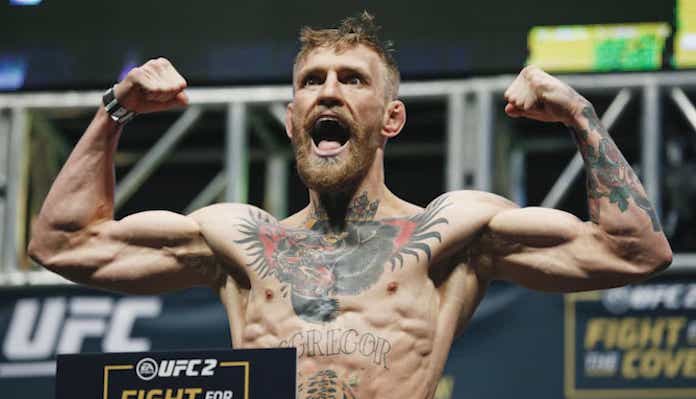Report | Study raises concerns over fighters taking weight-cutting advice from peers instead of doctors
A report from the Dublin City University has raised concerns over weight-cutting methods used by MMA fighters and influenced by their peers.

The University report lead by Dr Brendan Egan, David Nolan and John Connor from the School of Health and Human Performance investigated over 260 athletes that take part in rapid weight loss (RWL) practices to compete.
During their research, they found that weight-cutting practices “varied considerably between sports in terms of methods and magnitude.” They found across all sports, athletes regularly used weight loss information provided by peers (coaches and other athletes) as opposed to medical professionals.
Concerns over the lack of regulation and education have prompted calls for further examination, the intention being to establish protocols for the governing sports organizations and safeguarding for athletes.
Dr Brendan Egan released a statement on the DCU’s report findings:
“Rapid weight loss practices have been around for a long time in these sports, and as long as there are weight categories, athletes will look to gain a competitive advantage using these practices.
“It is important to understand which methods are being used, and how widely they are being used, and in turn, understand which individuals are most influential in providing information to athletes about these practices.
“Clearly there is scope to improve the quality of the information provided to athletes across a range of sports, but there is also a lot more research needed on the effectiveness and safety of the methods presently being used”.
See the key findings listed in the Dublin City University rapid weight loss (RWL) report below.
“The prevalence of RWL in the sample cohort of MMA athletes is generally greater than 95% while in the sample of powerlifters it stood at 86%.
“The prevalence of RWL in female powerlifters is over 90% and 83% for their male counterparts.
“The body mass loss in RWL for powerlifters scored quite low at less than 3% body mass in contrast to MMA being less than 8%.
“The body mass loss as part of the RWL process is greater in MMA than other sports and RWL is generally greater in MMA than other combat sport athletes.
“The opportunity for recovery in powerlifting is reduced by the fact that weigh-in before competition is usually two hours beforehand, leaving little time for recovery of fuel and fluid stores reduced by RWL and thus impacting strength; a key element of powerlifting.
“The methods used most commonly by Irish MMA athletes were those that reduced body water stores i.e; water loading, fluid restriction and hot salt baths. Winter or plastic suits, spitting, laxatives, diuretics, diet pills and vomiting (all RWL methods) are not commonly used in the MMA or powerlifters sample cohort.
“There were higher RWL scores in professional athletes compared to amateur fights indicating greater severity of RWL by professional fighters.
“The differences in methods of RWL between other combat and weight category sports remain to be explored.
“Several factors are at play including the culture of the sport, the number of weigh-ins and the duration of the time period from weigh-in to competition.
“Fellow fighters and coaches were the most influential sources of information in both powerlifters and MMA athletes whereas health and fitness professionals such as doctors and dietitians had limited influence.”
What do you think of this research into the weight-cutting practices used in MMA?
This article first appeared on BJPENN.com on 2/18/2020.
This article appeared first on BJPENN.COM
Previous Post
Topics:
UFC








